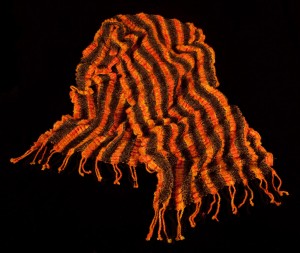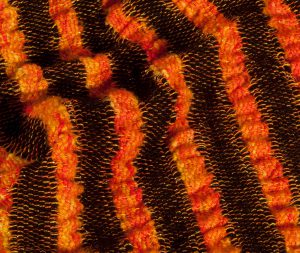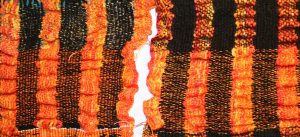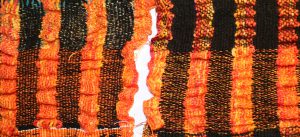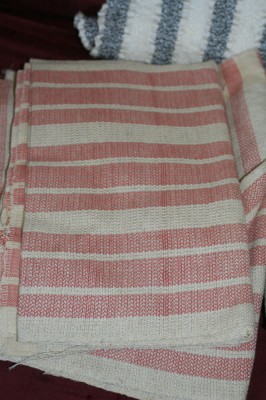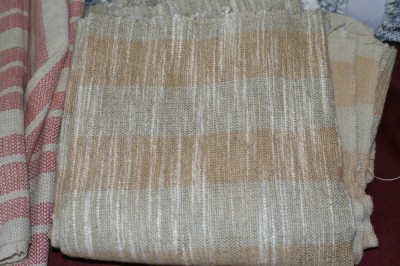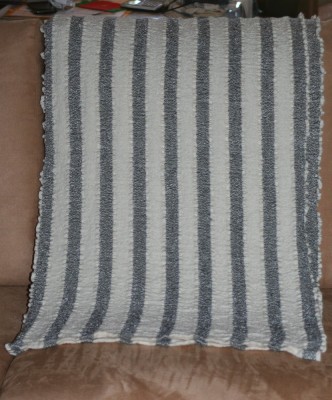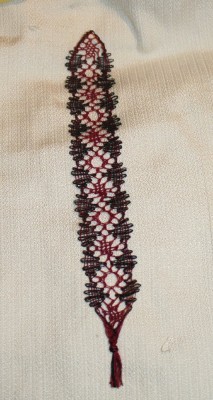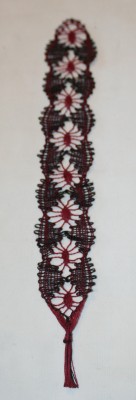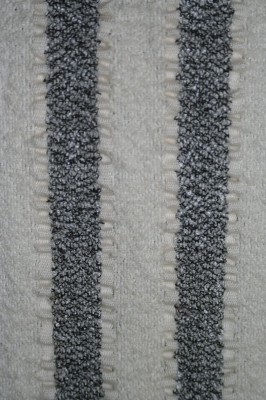By dint of hard labor (4 hours on Friday and another 6 hours on Saturday), I got the warp threaded, sleyed, tied on, debugged, and (ta-daa!) wove the first two yards of samples yesterday, all in variants of waffle weave. I cut the sample in half and wet-finished half of it, though I didn’t press it since I was after a collapse effect.
Here’s what I got:
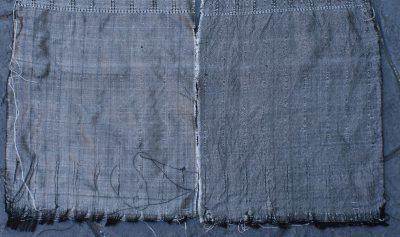
You can see that there is (as expected) close to no collapse here. I think the sample looks darker because the warp and weft collapse into one another a bit, “averaging out” the color. It’s a pity, as I really loved the silvery look of the freshly woven fabric. Pressing might also help; I need to try that later.
Next up, waffle weave, both as an allover pattern and as a networked pattern, also with firmly beaten 60/2 silk as weft:
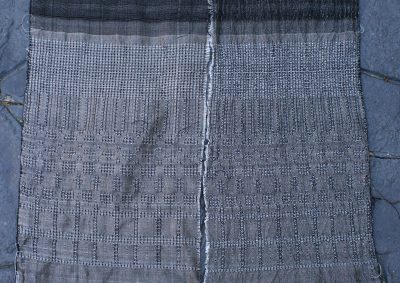
Here you can see more collapse, but not as much as I had hoped; I was hoping for a really puffy look, but what I got was a bit of unevenness. I suppose that’s to be expected as the waffle cells were not huge and there is still quite a bit of plain weave. Notice that the sample is getting narrower, too, because of the collapse. Especially in the “pure” waffle weave section.
Next, I tried weaving it with an overtwist wool yarn that I got from Laura Fry. First, I beat it firmly:
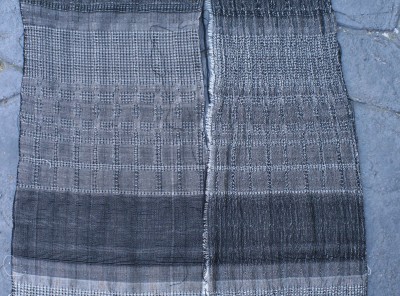
The collapse is fairly dramatic and even the plain weave sections are collapsing substantially, suggesting that the 40 epi sett is still a little wide to produce a balanced weave with the overtwist yarn – thus giving it room to collapse in on itself.
The collapse in the waffle section is even more dramatic, but – zoom in to look at the closeup – most of the definition is gone from the waffle cells. A pity; I thought they were attractive.
And, finally, the overtwist yarn, beaten very softly to produce a very open cloth:
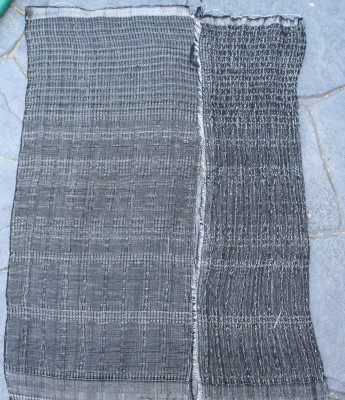
Here the collapse (as expected) is super dramatic – over 50% – but, alas, you can barely make out any pattern.
I am guessing that using a felting wool weft would probably result in similar results. Today, if I am sufficiently motivated, I may try weaving up a sample with a 1/22 mohair yarn (a trifle larger than the 60/2 silk warp) and wet-finishing it in the washing machine. But today is dye day, so I’m not sure I will get to it!
Plan for today: dye the first batch of Lanaset samples in “pure” colors. This means mixing up stock solutions for each of the pure colors (colors that are not mixes of other colors), then dyeing skeins of yarn at various depths of shade. Per Karen’s assignment, each color should be dyed at 0.1%, 0.5%, 1.0%, and 2.5%, with navy and black at 0.5%, 1.0%, 2.5%, and 5%. That comes out to 4 samples for each color.
Now, I am dyeing the 5 gram sample skeins in pint mason jars, and I can fit 17 of them into the electric frying pan that I use for samples. So I can basically do four colors at once, assuming I can keep up with all the stirring that needs to be done. (I think I can, but have to experiment to find out!) So that is one set of dyeing work.
I also want to dye some 12,000 ypp tencel/silk yarn in jewel tones to use as weft with this warp. This means using a different dye, since tencel is a cellulose fiber. I will dye this using Cibacron F. Since I am not especially concerned about reproducible color here, I can use a looser methodology than with the Lanasets. But it still means using winding (and tying!) more skeins, a different type of dye, mixing up different dyestocks, and somehow trying to keep track of all of this while dyeing the other stuff. Maybe not such a good idea! But I really do want to get it dyed as well.
And, finally, ten pounds of cherries are still staring at me reproachfully from the fridge. Today is cherry pie day, I think, and maybe a batch of brandied sour cherries, or some more candied sour cherries.
All in all, makes for a busy day. Better get started!
